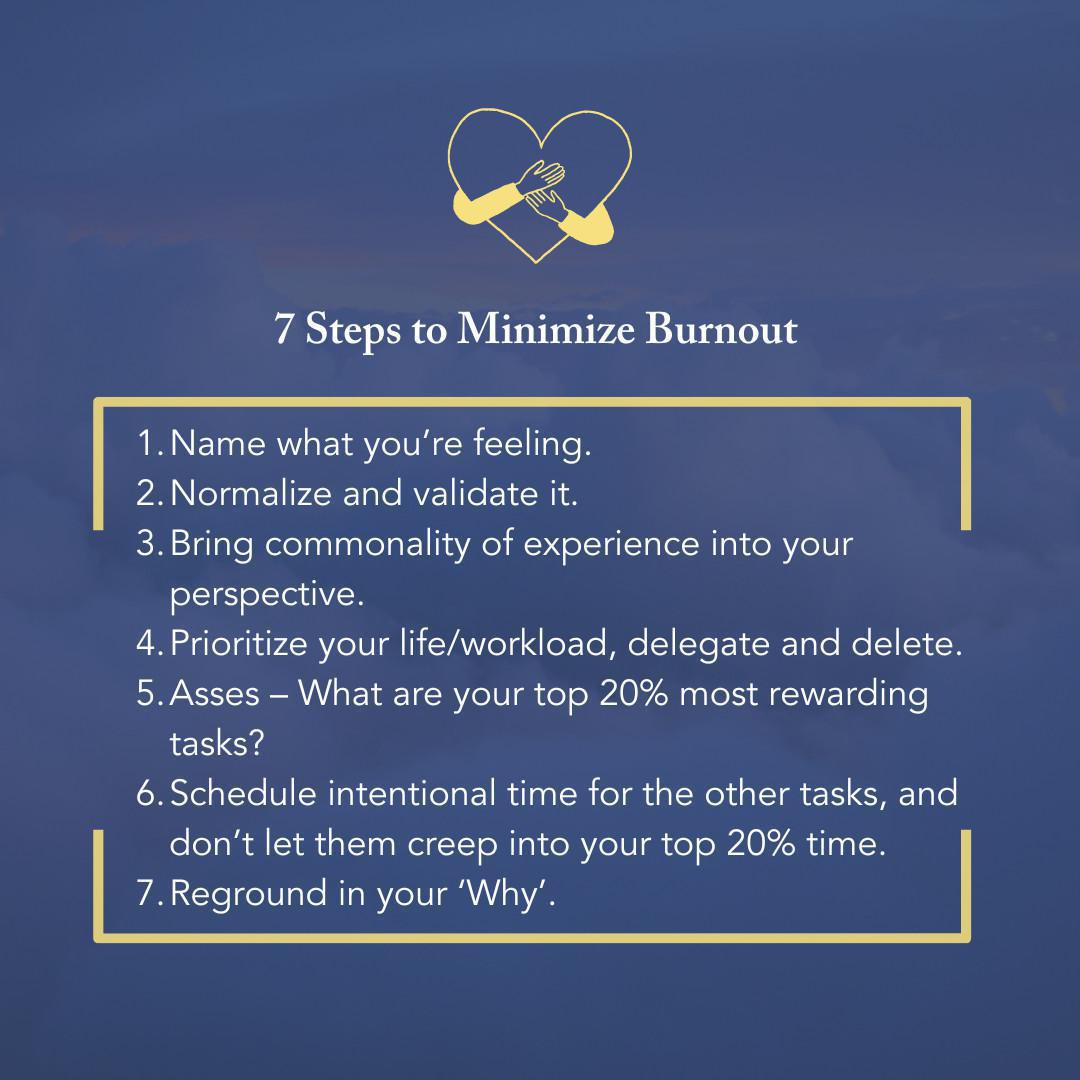
Burnout – a topic that garners lots of attention, but still lacks clear solutions. It’s on the rise, affecting an astonishing number of us with symptoms like mental, physical, and emotional exhaustion, decreased productivity, feelings of dread, and increased likelihood of being susceptible to illness.
Frequently, burnout is related to the workplace; A poll conducted by the National Alliance on Mental Illness reported that upwards of 52% of people reported feeling burnt out at work. However, it is more practical and realistic to take a broader perspective, and consider that workplace overwhelm is just one part of the burnout puzzle. You can’t ignore the mental load of other roles that you might have– parent, friend, sibling, partner, educator, student, caregiver, community member, and so on.
Here are some examples of how these roles can contribute to feelings of overwhelm and, eventually, burnout.
- The desire to stay connected to friends and family who are important to you requires regular communication, planning and time spent together.
- The responsibilities of being a caregiver require dedicated energy, self sacrifice, and patience.
- The responsibility of giving back to the community through volunteering or donations requires time, financial resources, and coordination of your schedule.
- The need to carve out time just for you and your own wellbeing and development requires boundaries, intention, and focus.
It's natural to experience burnout at different seasons or stages of life; no one is immune to it. Our emotional connectedness with others is vital for
- Fostering meaningful relationships
- Finding purpose in life
- Avoiding the harmful effects of loneliness.
People often make the common mistake of pushing themselves to meet unattainable expectations, saying 'yes' too often, and misjudging their time and energy. While these are honest mistakes, the first step to overcoming burnout is acknowledging and validating your feelings.
Basically: you are just a well-intentioned human doing the best you can on a day to day basis.
Once you have acknowledged what is going on in your internal world, it’s time to start finding a path forward. Think about it like this: you have pulled everything out of your closet and it feels overwhelming. Slowly but surely, you start to put everything into a place, creating organization and clarity with each step. One of our favorite time management tools is the Eisenhower Matrix, which helps bring so much clarity and space to the never-ending to-do list.
How to banish burnout
Banishing burnout requires, most importantly, a mindset shift. Regrounded yourself in a quality over quantity approach. How would your plan for the week change if you were to focus on the top 20% of your tasks? The ones that were most rewarding – financially, emotionally and mentally? It’s not a perfect science, and sometimes you can’t completely delete the bottom 80%, but it can help you to reframe how much energy you need to spend on less critical tasks. If utilizing schedule blocks on your calendar helps you, find a point in your week when you can focus on those unavoidable bottom 80% tasks.
Establishing boundaries for when you focus on certain tasks can help you release the need to constantly think about them or carry them on your mental load. The same principle applies to lists when used effectively. Create a list of the unavoidable bottom 80% tasks and reserve them for the time you've specifically blocked off for them. This signals to your brain that you don't need to worry about remembering these tasks.
These strategies have been shown to clear space and reground in your ‘why’ personally and professionally. It can allow you to feel re-energized, inspired, purposeful and connected to the bigger picture.
7 Steps to Minimize Burnout:
- Name what you’re feeling
- Normalize and validate it
- Bring commonality of experience into your perspective
- Prioritize your life/workload, delegate and delete
- Asses – What are your top 20% most rewarding tasks?
- Schedule intentional time for the other tasks, and don’t let them creep into your top 20% time.
- Reground in your Why

- What am I feeling?
- What would help me to validate it?
- What are my priorities?
- My top 20%:
- My unavoidable 80%:
- Reground in your Why:




